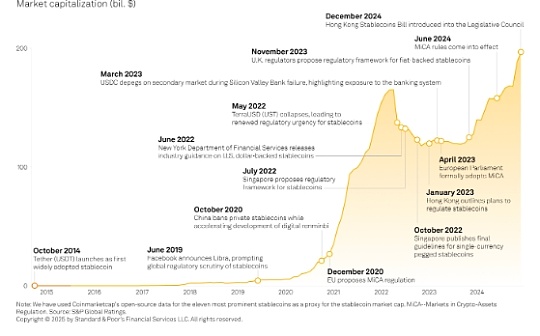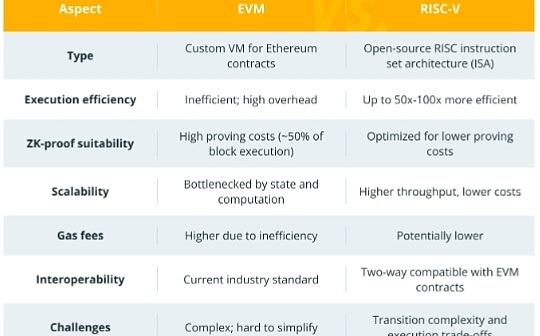
Author: Dilip Kumar Patairya, CoinTelegraph; Compilation: Baishui, Bitchain Vision
1. What is liquid pledge?
Liquid stakes allow stakers to maintain liquidity in their staked tokens by using alternative tokens, and they can earn additional benefits through the DeFi protocol using alternative tokens.
Before we get into the in-depth understanding of liquid staking, let us first understand the pledge and the issues related to it.Staking is the process of locking cryptocurrency into a blockchain network to maintain it, which enables stakers to make profits.However, pledged assets often become lacking in liquidity during pledge because they cannot be traded or transferred.
Liquid staking enables cryptocurrency holders to participate in staking without giving up control over their holdings.This changes the way users do stakes.Projects such as Lido have introduced liquid staking to provide tokenization of pledged assets in the form of tokens and derivatives.
It allows users to gain the advantage of staking while retaining the flexibility of transactions, trading these tokens in a decentralized finance (DeFi) application or transferring them to other users.
2. Is there a difference between entrusted pledge and liquid pledge?
Internet users in Delegation Proof (DPoS) vote to choose their preferred client.However, the purpose of liquid stake is to allow stakers to circumvent the minimum stake threshold and mechanism to lock in tokens.
Although DPoS draws on the basic concept of proof of stake, it is executed differently.In DPoS, network users have the right to elect representatives called “witnesses” or “block producers” to perform block verification.The number of representatives participating in the consensus process is limited and can be adjusted through voting.Network users in DPoS can centralize their tokens into a staking pool and use their comprehensive voting rights to vote for the preferred representative.
On the other hand, liquid staking aims to lower the investment threshold and provide pledges with ways to avoid locking the token mechanism.Blockchain usually has minimum requirements for staking.For example, Ethereum requires anyone who wants to establish a validator node to stake at least 32 Ethereum (ETH).It also requires specific computer hardware, software, time and expertise, which in turn requires a lot of investment.

3. What is pledge-as-a-service?
Staking as a service is a platform that acts as an intermediary, connecting the consensus mechanism of blockchain with cryptocurrency holders who want to contribute to network functionality.
Staking as a service is a platform or service that enables users to delegate their crypto assets to third parties, which then participate in the staking on behalf of the user, usually charging fees or sharing rewards.JPMorgan noted that by 2025, the size of the pledge services industry will expand to $40 billion.Cryptocurrency staking services will play an important role in this emerging economy, and liquid staking will become an integral part of it.
Depending on the degree of decentralization, staking as a service platform can be divided into managed and unmanaged, which plays an important role in maintaining the best interests of stakeholders and maintaining transparency.To promote decentralized governance, key decisions are made by the Decentralized Autonomous Organization (DAO).
Hosted staking as a service involves extensive management of the staking process.The staking services provided by cryptocurrency exchanges are escrow.Rewards first flow to the stake provider and then distributed to the stakeholder.
In the unmanaged stake as a service model, validators charge commissions to anyone who wants to participate in stake.In a PoS network that supports native delegation, the reward share of the stakers is sent directly to them without the involvement of the verifier.
4. How liquid pledge works
Liquid staking is designed to eliminate the staking threshold and allow holders to make profits using liquidity tokens.
The staking pool allows users to use smart contracts to merge several small stakings into a large staking, and the smart contract provides each stakinger with the corresponding liquid token (representing their share in the staking pool).
This mechanism removes the threshold for becoming a stakeholder.Mobile pledge goes a step further, allowing the pledger to obtain double benefits.On the one hand, they make profits from the tokens they pledged, and on the other hand, they make use of liquid tokens to earn through financial activities such as transactions, borrowing or any other activities without affecting their original pledged positions.profit.
Using Lido as a case study will help us better understand how liquid staking works.Lido is a liquid staking solution for PoS currencies that supports a variety of PoS blockchains, including Ethereum, Solana, Kusama, Polkadot and Polygon.Lido provides innovative solutions to the barriers posed by traditional PoS staking by effectively reducing barriers to entry and the associated costs of locking assets in a single protocol.

Lido is a pledge mining pool based on smart contracts.Users who deposit assets on the platform will pledge them on the Lido blockchain through this protocol.Lido allows ETH holders to stake a small portion of the minimum threshold (32 ETH) to earn block rewards.After depositing funds into Lido’s staking pool smart contract, users receive Lido Staked ETH (stETH), an ERC-20 compatible token that is minted on deposit and destroyed on withdrawal.
This protocol distributes the staking ETH to the verifier (node operator) within the Lido network, which is then deposited into the Ethereum beacon chain for verification.These funds will then be protected by a smart contract that validators cannot access.ETH deposited through the Lido staking protocol is divided into a collection of 32 ETHs among active node operators on the network.
These operators use public verification keys to verify transactions involving user-staked assets.This mechanism allows the user’s staking assets to be distributed across multiple validators, thereby reducing the risks associated with single point of failure and single validator staking.
Stakeholders depositing Solana (SOL) tokens, Polygon (MATIC), Polkadot (DOT) and Kusama KSM through a set of smart contracts in Lido will receive stSOL, stMATIC, stDOT and stKSM, respectively.stToken can be used to earn DeFi earnings, provide liquidity, trade on decentralized exchanges (DEXs), and many other use cases.
5. Are there any risks in liquid staking platforms?
Like any product or service in the cryptocurrency space, technical threats and market volatility need to be considered when dealing with liquidity staking.
Technical Threat
PoS blockchains are still relatively new and there is always the possibility that protocol errors or vulnerabilities will lead to the loss or exploitation of assets.Relying on verifiers to stake will also bring counterparty risks.
Market risk
Liquid staking unlocks the pledged assets, allowing stakers to receive rewards from DeFi applications.However, this also brings the risk of losing both lines during market downturns.
Keeping the liquid staking platform open source and regularly reviewing it will help prevent threats to a certain extent.Developing a bounty plan for the platform can also help minimize mistakes.
Carrying out comprehensive due diligence is critical to dealing with risks associated with market volatility.This includes studying historical market data, evaluating the financial health of potential investments, understanding the regulatory environment, and developing diversified investment strategies.








